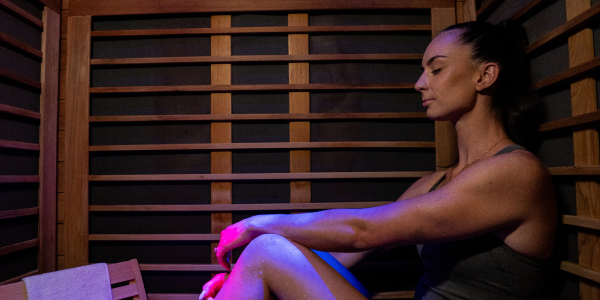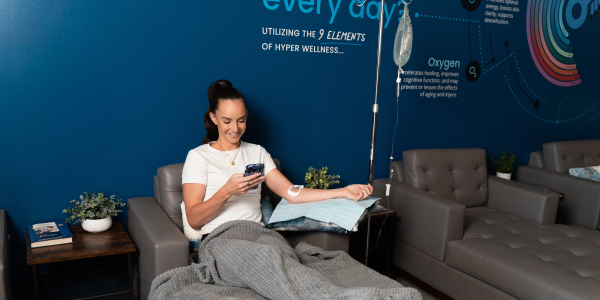As humans, we evolved under the presence of sunlight, which served to produce Vitamin D and interact with our eyes to help control appetite, mood and sleep. Getting sunlight is essential for the production of natural Vitamin D, which promotes healthy bones and teeth, supports immune, brain and nervous system health, and even supports lung function and cardiovascular health. You can take supplements of Vitamin D orally or via IV Therapy, but natural exposure to sunlight, at least 10-30 minutes per day, may help you produce Vitamin D more efficiently and provide a variety of benefits that can help with appetite, mood and sleep.
Red Light Therapy Is Not A Replacement for Sunlight
In the past several years, Red Light Therapy (also known as Photobiomodulation Therapy) has been touted as a replacement for sunlight. And while Red Light Therapy can be helpful to improve mood, optimize sleep and relieve minor pain, IT IS NOT a substitute for natural sunlight. For one, Red Light Therapy does not allow for the production of Vitamin D. But there are additional reasons why the two light sources differ, as well as reasons why both can help you do more.
Here at Restore, we’re fans of balance. We know our services can help you feel your best, so you can do more of what you love, but we also know that knowledge is power. Red Light Therapy is a powerful tool that we trust, and in as little as 10 minutes per day, Red Light Therapy can help provide an array of results that improve mood, relieve pain and inflammation, and optimize sleep.
But Red Light Therapy is vastly different from exposure to natural sunlight. How? Here’s a quick list of highlights:
- Red Light Therapy is done indoors.
- Red Light Therapy does not help produce Vitamin D.
- Red Light Therapy’s intensity can be adjusted via controls.
- Red Light Therapy does not give you a sunburn.
In the same way, natural sunlight is vastly different from Red Light Therapy. How? Here’s another list of highlights:
- Natural sunlight is only available outside.
- Natural sunlight is not always available, deepening on location and weather.
- Natural sunlight produces Vitamin D when absorbed into the skin.
- Natural sunlight may burn when overexposed.
Red Light for Sleep
The average person spends over 90% of their time indoors, without exposure to healthy forms of light. A lack of healthy light can lead to fatigue, poor sleep and decreased well being. This is why you probably don’t feel too good when you spend all day indoors working and then realize at 9 p.m., “Hey, I’m not tired and I barely left the house today….”
But specific wavelengths of light may have a positive effect on the human body. Red and near infrared light may increase the body’s ability to increase energy. Red Light Therapy takes 10 minutes and can be done 3-5 times weekly. When paired with regular visits outside to get natural sunlight, you are choosing to optimize your exposure to healthy light while synthesizing the production of Vitamin D. And you may help the body prepare for a good sleep cycle in the process. Yes, Red Light for sleep is something we hear about often at Restore.
Remember to balance your lifestyle around natural exposure to sunlight and Red Light Therapy. And if you’re within walking distance of a Restore location, you can get the best of both worlds by walking outside to your Restore appointment for Red Light Therapy.
New life hack achieved!
Learn more about Restore Red Light Therapy.






